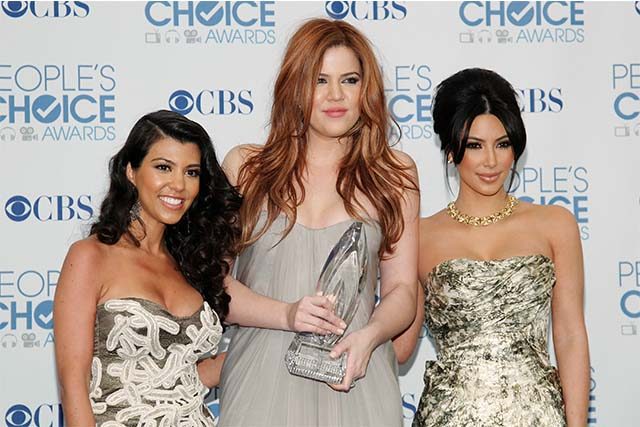
Kim Kardashian West has announced to her 160m followers on Instagram that Keeping Up with the Kardashians will end after its next season.
The Kardashians, particularly Kim, have been at the center of cultural debates and controversies for 13 years. Like all important figures, they are hated and loved, respected and mocked, emulated and despised. They have influenced major contemporary debates and will leave a lasting and complicated legacy of social change.
When the show first aired in late 2007, the world was introduced to a family of six women and two men, headed up by self-titled “Momager”, Kris Jenner. The family is a matriarchy — and many critics dislike this intensely.
Jenner is repeatedly characterized as a kind of wicked witch, exploiting her children for her gain. But her presentation as a strong matriarch and businesswoman is an important part of the Kardashian legacy. As the seasons rolled out, men became less and less important to the storylines. Now, each sister except Kendall has embraced motherhood and, as their partners and husbands have come and in some cases gone, they continue this matriarchal power in their own families.
The pairing of single motherhood and great financial success – two statistically contradictory things – sends a radical message about motherhood and autonomy. Kylie Jenner, the youngest, chose to become a single mother at 20, and in the same year emerged as a business mogul via her Kylie Cosmetics brand, with a net worth of $900 million (£693 million). (She was named youngest self-made billionaire by Forbes but that has since changed.)
Since the show began, many new little Kardashians have appeared. These offspring have helped to normalise modes of conception not normally discussed publicly via what popular culture academic Kim Allen calls “mediated maternity”. This is the media focus on celebrity pregnancy and birth via images and stories.
Kim and Kourtney Kardashian have given birth on television, and Kim’s youngest children came about via surrogate. Khloé Kardashian has frozen her eggs, and Kylie Jenner planned motherhood independent of marriage or even partnering at the age of 20.
The Kardashian body
As well as changing perceptions of what it means to be and become a mother, the family has had a huge impact on perceptions of womanhood – particularly notions of beauty.
The global idea of the “perfect” mainstream woman’s body was, until recently, narrowed (although not limited) to tall, stick-thin, blonde and white. This ideal was impossible for most women to emulate.
Now, in 2020, the pendulum of perception has swung away from that and rests firmly on a more curvaceous archetype of womanliness. Along with Jennifer Lopez and Beyoncé, Kim Kardashian has certainly been a leading driver of this change – not so much by advocating it but by embodying it.
From the very beginning of the show, Kim was proud of her butt and breasts. The media scholar Alexandra Sastre has written that Kim’s body is “a site where both her ‘realness’ and artificiality lie” – the realness coming from her natural curves, the artificiality from her embrace of various glamorous enhancements.
Although they may have changed body ideals, trying to closely emulate the Kardashians’ bodies and faces can still be oppressive. Their looks have dramatically morphed over the years and this promotes its own damaging ideals.
The Kardashian body style, in its current form, is difficult to achieve without continual grooming, dieting and gym work, as well as various plastic surgeries. While, in some ways, it is perhaps more accessible, it too has created unrealistic body ideals and pressure to emulate the trademark skinny waist, big butt body ideal.
That said, fashion and beauty academic Gemma Cobb has noted that Kendall Jenner, the supermodel sister, is lauded for her thinness and compared favorably to her sisters.
Social media queens
Much of the Kardashians’ ability to shape perceptions of beauty have been bolstered by their adept use of platforms like Instagram. They were early adopters of social media and have amassed millions of followers, to the point where the television show now plays second string to their Insta feeds.
They were at the forefront of making social media our most important communication tool and their brands are envied by the business world. Kylie’s is particularly notable, as she was able to leverage her huge Instagram following (nearly 190 million) into a successful beauty empire – with nearly every product becoming an almost-instant sellout.
The show may be ending but the Kardashians will certainly continue to dominate cultural conversations. Kim, in particular, will keep making headlines, but maybe not the ones most expected, as other recent news shows.
Kim has become a strong advocate for criminal justice reform. She has used her influence to gain direct access to Trump and start conversations about reforming the incarceration system. Most notably she helped several women get their sentences commuted. She is also studying for a law degree and plans to set up her own law firm.
While her husband is the one currently running for office, it is not such a far-fetched idea that she too one day will enter the political arena. The US currently has a reality star for president, and Kim K is certainly far more qualified, liked, aware of social issues, and connected to contemporary concerns than the incumbent.![]()
Meredith Jones, Reader in Gender and Media Studies, Brunel University London. This article is republished from The Conversation under a Creative Commons license. Read the original article.









